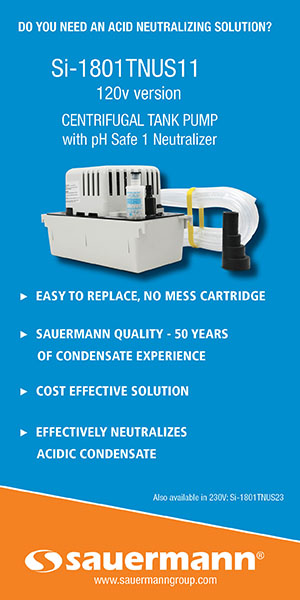We commonly hear from contractors that salespeople are not techs and they don’t want to learn how to test an HVAC system before they propose a replacement.
If a salesperson truly cares about doing the right thing for his or her customer, it’s exactly what they should know how to do.
Testing can help provide your customer with the safest, healthiest, most comfortable, and energy-efficient system possible. This process is easily learnable even by the least technical individual.
Let’s look at the three measurements a salesperson should learn how to take on every working system they encounter.
Static Pressure
Static pressure truly is the blood pressure of the system. An equipment’s Total External Static Pressure (TESP) is equivalent to the highest blood pressure the heart sees. It’s an indicator of what’s going on with the entire system. Testing allows you to interpret airflow leaving the fan.
Typically the higher the static, the lower the airflow. While this doesn’t tell the whole story of whether a home is comfortable, or how much energy is being wasted, it’s a very good start.
Temperature
By adding temperature to the equation you can begin to see a clearer picture of what is going on. You can start by measuring temperature at the supply and return side of the equipment. This provides the system’s ΔT, or temperature change.
In heating mode, you subtract the sensible return temperature from the supply temperature to determine the temperature increase from the equipment. In cooling mode, you measure sensible and latent temperatures to get enthalpy, and subtract supply enthalpy from return enthalpy to determine the temperature reduction (ΔH).
You can also measure supply register and return grille temperatures in the same way to get a rough idea of the entire system’s delta. You can then multiply this number by the airflow interpreted with your TESP reading to get delivered Btus. There’s a little more to it, of course. But while this is just a rough snapshot, it will give you a pretty good idea of the existing system’s performance.
Airflow
While you could measure airflow at every supply and return, this often isn’t necessary during a sales call. Instead, use an airflow hood during the initial interview process with your customer.
As you discuss existing issues and determine which rooms don’t heat or cool as well as they should, you can take the customer to those rooms and directly measure airflow at the registers and grilles. This is a key part of the educational selling process. Nothing compares to the customer actually seeing what is going on with their own eyes.
Of course, each of these tests require some training and good instruments so you can quickly perform them. The tests will take a little longer at first, and we recommend practicing by performing them on your own home or a relative’s home the first few times.
Most find that in no time they can do this testing very quickly and efficiently, truly impressing their customers. NCI even has a free app you can use on a smart phone to speed up the process.
The key is getting started. Even your least technical salesperson will be testing like a pro in no time, setting you apart from the competition. And they will be doing the right thing to provide your customers with the value and quality comfort system they deserve.













Recent Comments